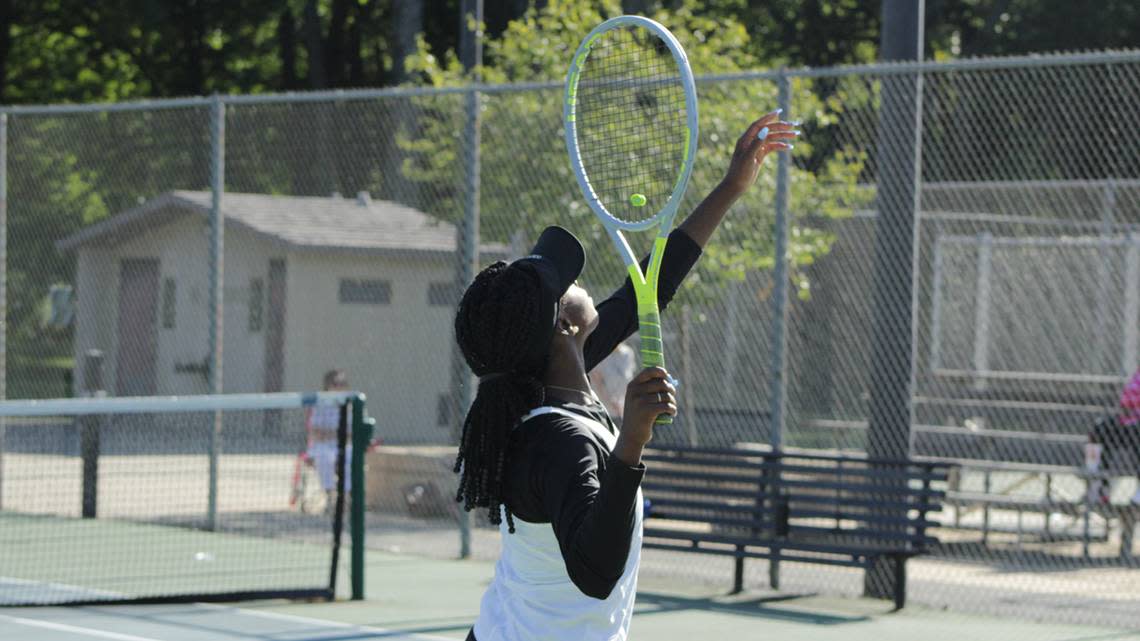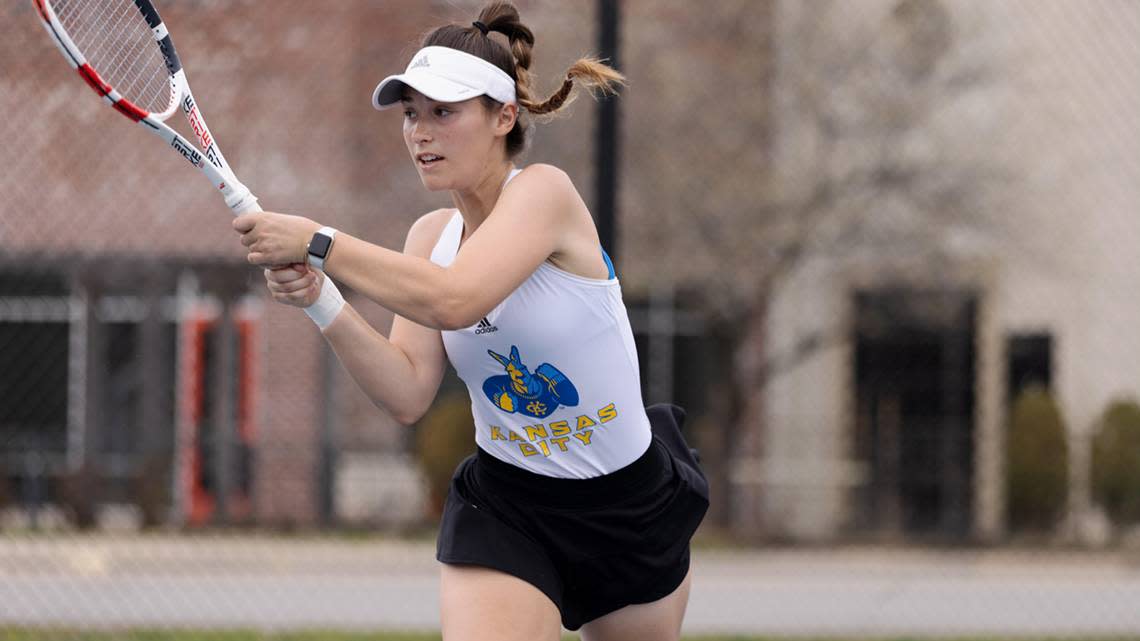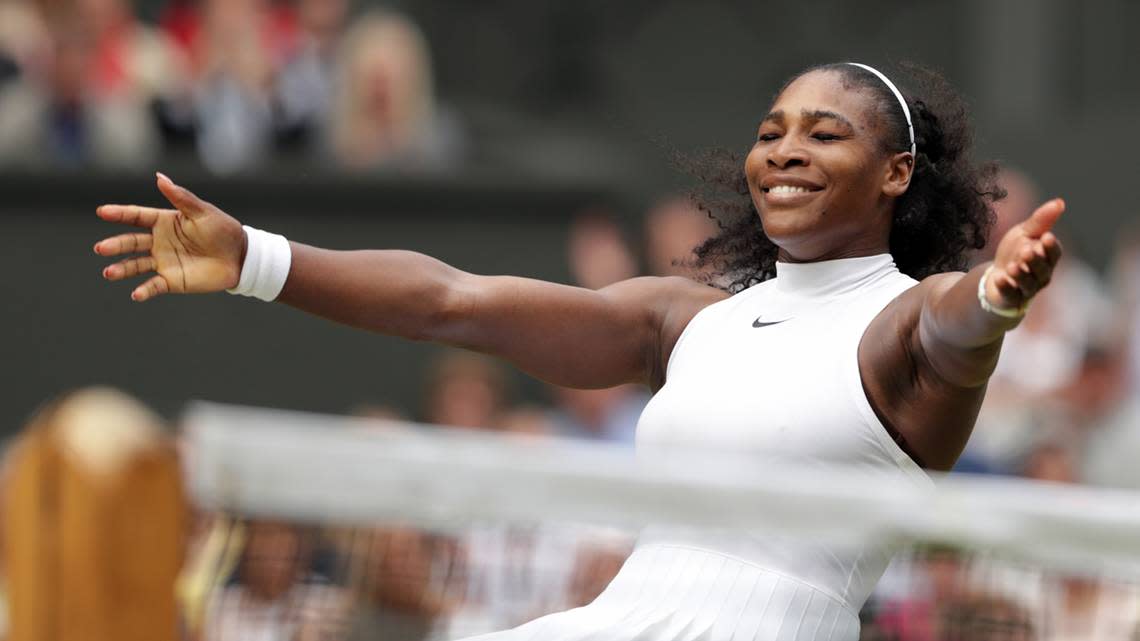The great Serena Williams inspired generations of athletes in Kansas City and beyond
It’s not lost on 16-year-old Leiloni Payton — a top tennis player at Lincoln College Preparatory Academy — that if not for Serena Williams rising to the top of her sport in her unapologetic “This is just me!” fashion, Leiloni might never have played the game she has come to love.
Serena, who lost a thrilling match in the third round of what is expected to be her final Grand Slam tournament Friday night before a raucous farewell crowd at the U.S. Open, did so much more than just win. She broke barriers. She used her indomitable spirit and her powerful voice to benefit the vulnerable and less fortunate. She built schools for the most marginalized children and championed health care for poor women and newborns. The Serena Williams Foundation supports social justice and civil rights. She speaks out against violence.
No wonder Leiloni, like thousands of young women around the world and here in Kansas City, sees Serena as her greatest inspiration.
Serena, 40, announced her intention to retire last month from the sport she has dominated since she was 17. The 23-time Grand Slam champ had fans on their feet throughout the fiercely contested match in Flushing Meadows, New York. She’s won there six times. Standing at center court of Arthur Ashe Stadium, she credited her parents, her fans and her big sister Venus Williams for what many tennis observers are calling the most dominant career in women’s tennis history.
Serena’s journey from gang-ridden urban courts in Compton, California, to her place among the greatest to play the sport, perhaps any sport, has left legions of admirers worldwide and on and off the tennis courts all over Kansas City.

“She’s my inspiration,” said Leiloni, who like so many young athletes for whom Serena is a pole star, is Black. “I love her so much. I love her aggression, her passion, her dedication and everything about her. She never gives up. As far as role models go, she’s it.”
For some, the pending retirement of their paladin is cause for sorrow. Angelea Johnson, 16, a sophomore on the junior varsity tennis team at Lee’s Summit High School, is one of those who is “sad,” she said.
Angelea picked up the sport two years ago and models Serena’s competitive grit. Her hero has left her with a valuable lesson in how to live life, Angelea said. “I love that she’s very aggressive on the court and calm off of it,” she said. “She helped me understand that you can be aggressive in a positive way.”
Changed face of a white-dominated sport
Tennis remains a predominantly white sport, but Serena and her older sister Venus — a seven-time singles Grand Slam winner — did a lot to change the face of the game, from players to fans.
From the moment Serena stepped onto the major courts as a teen with her white beaded braids swaying with every powerful swing of her racket, America was enraptured. Some tennis fans got mad. Others were in awe. Many came to the sport for the first time. She didn’t look like, play like, move like or dress like other players. Her personal style was a statement of self and cultural love, and demanded the respect her undeniable skills deserved.

Others are inspired by Serena’s ability to overcome many obstacles.
“She showed that you don’t need to come from a family of millions to play this sport and win,” said Eva Kresovic, a University of Missouri-Kansas City tennis player. “I love that she is a fighter and she overcame so much. Serena paved the way.”
“I’m a Black woman in a sport not meant for Black people,” Serena told Wired Magazine in a 2015 cover story. Players of color such as Madison Keys, CoCo Gauff, Naomi Osaka and Sloane Stephens followed Serena’s lead onto the major courts.
With Serena’s fame, enrollment boomed at the Stephanie Waterman Foundation camp, which uses tennis to teach life skills to underserved children in Kansas City. That’s where Leiloni picked up her first racket at 6 years old.
“Kids want to see players, instructors that look like them,” said Scott Hanover, foundation executive director. Serena is “relatable to lots of different kids from different backgrounds.”
One universal lesson we all can learn from Serena? That’s easy, said Angelea: “Even if you have people that don’t like you, continue to shine in your greatness.”
Serena’s true greatness was in how she defied the odds, overcame huge challenges in and out of the world of tennis, and stayed true to herself in a way that moved millions. Nothing proves that more clearly than the way her own life has lit the path for so many young athletes who see in her journey a premonition of their own greatness.

